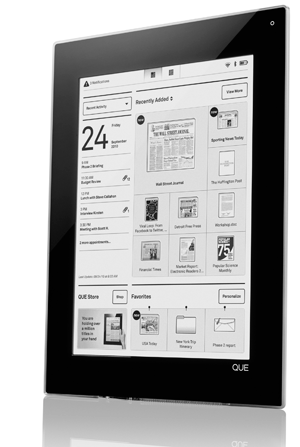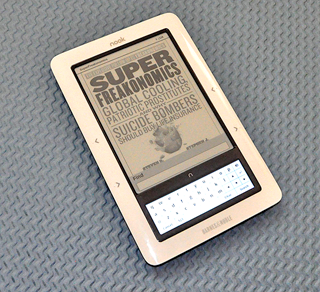 Nintendo’s DSi XL will double as an e-reader soon after it launches next month, though it won’t have anything close to the book selection of Amazon’s Kindle or Barnes & Noble’s Nook.
Nintendo’s DSi XL will double as an e-reader soon after it launches next month, though it won’t have anything close to the book selection of Amazon’s Kindle or Barnes & Noble’s Nook.
The DSi XL, a chunkier, larger-screened version of Nintendo’s wildly popular gaming device, goes on sale in the United States on March 28 for $190. The “100 Classic Books” collection, which includes classic public domain works from William Shakespeare, Mark Twain and others, will be available in June, Bloomberg reports.
Sound familiar? That’s because Nintendo already released the books-on-a-cartridge to the United Kingdom in December 2008. I’m not sure why it took so long for the collection to come stateside, but reading the books on the DSi XL, with its 4.2-inch screens, sounds more pleasurable compared to the original DS and DSi, which had 3-inch and 3.25-inch screens respectively. And despite the growing competition among e-readers, Nintendo’s device could be the most book-like, with two displays that you can hold up side-by-side.
Nintendo’s sales and marketing vice president Cammie Dunaway told Bloomberg that the company’s not trying to get a piece of the e-reader market. Let’s face it, without a cloud book store or the promise of weeks-long battery life, the DSi’s not equipped to do so anyway.
But I do think publishers would be wise to start bundling books onto DSi cartridges. Imagine the entire Harry Potter series on one cartridge — what a great gift that aunts and uncles who clueless about video games can give to their niece or nephew who has a DSi. As Dunaway said, “It’s just one more way to enjoy your device.” It shouldn’t start and end with the public domain.
 In the era of the iPad, there are two paths that the still-nascent gadgets known as e-readers can take. They can try to take the iPad on head-to-head by adding fancy color touch screens and new features that go beyond reading. Or they can get even simpler and even cheaper, until it’s unlikely that it’ll even occur to anyone to compare them to the iPad.
In the era of the iPad, there are two paths that the still-nascent gadgets known as e-readers can take. They can try to take the iPad on head-to-head by adding fancy color touch screens and new features that go beyond reading. Or they can get even simpler and even cheaper, until it’s unlikely that it’ll even occur to anyone to compare them to the iPad.
 Amazon has released its Kindle for Mac software, letting OS users get at all those e-books in Kindle format. It should be a boon to anyone who has a Kindle, has bought books for it, and wants to read ’em on a Mac–but I’m on the road sans Mac at the moment, so it’ll be a few days until I can try it for myself. If you snag it, let us know what you think.
Amazon has released its Kindle for Mac software, letting OS users get at all those e-books in Kindle format. It should be a boon to anyone who has a Kindle, has bought books for it, and wants to read ’em on a Mac–but I’m on the road sans Mac at the moment, so it’ll be a few days until I can try it for myself. If you snag it, let us know what you think. Plastic Logic, which was
Plastic Logic, which was 

 Two months ago, Barnes & Noble shipped its Nook, the most eagerly-anticipated e-book reader since Amazon’s Kindle. I thought it
Two months ago, Barnes & Noble shipped its Nook, the most eagerly-anticipated e-book reader since Amazon’s Kindle. I thought it  So Amazon.com has bought itself
So Amazon.com has bought itself